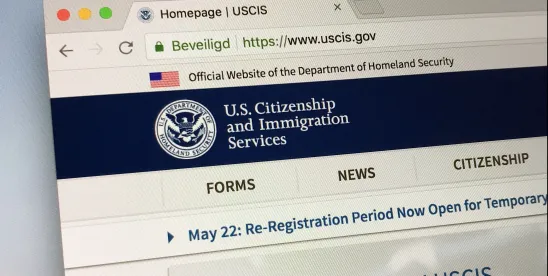On Aug. 29, 2025, U.S. Citizenship and Immigration Services (USCIS) issued Policy Alert PA-2025-19, announcing a shift in how filing fees must be paid. Beginning Oct. 28, 2025, USCIS will no longer accept paper checks or money orders. Instead, all fees must be paid electronically, either by credit card using Form G-1450, or via ACH debit using the newly introduced Form G-1650.
Features of ACH Payments
The transition to ACH payments brings several key changes to employers who sponsor foreign national employees:
- Greater reliability: ACH payments are less prone to loss or delay compared to paper checks, offering a more secure, traceable transaction.
- Faster processing: Electronic funds clear more quickly, reducing the risk that payment delays will lead to filing rejections.
- Improved audit trail: ACH records are electronically stored and easy to retrieve, simplifying compliance tracking.
- Reduced administrative burden: Employers no longer need to manage multiple paper checks for filing fees, cutting logistical complexity.
Potential Concerns to Monitor
Employers may encounter pitfalls as this policy rolls out:
- System stability: As USCIS implements its ACH platform, temporary glitches (including failed transactions or formatting errors) may occur.
- Form accuracy: Mistakes on Form G-1650 (or G-1450) may lead to rejected filings. Even small mistakes, such as a mistyped account number, could disrupt critical filings subject to strict timing requirements.
- Refund and reconciliation clarity: Employers await clear guidance on how USCIS will handle refunds for rejected or withdrawn filings under the new system, and how those will be documented.
- Cash flow management: High-volume ACH debits could strain bank accounts if not carefully coordinated and scheduled.
Transitional Considerations
- Paper payment exemptions: Until Oct. 28, 2025, employers with extenuating circumstances may submit Form G-1651 to request permission to continue using paper checks. While the threshold for granting such exemptions may be high, this short-term flexibility could be relevant for certain cases.
- Public feedback: USCIS is accepting public feedback on this policy change through Sept. 29, 2025, signaling a phased and consultative rollout.
Receipt Numbers and Payment Timing
An ACH debit is not the same as a USCIS receipt number. While the debit will appear with your bank, sometimes within one business day, USCIS does not issue a receipt number as soon as the ACH clears. A receipt number is assigned once the petition package is accepted into its system. Thus, for employers, the bank debit represents interim proof of payment, not confirmation that the case has been receipted.
Looking Ahead
USCIS’s move to electronic payments is part of a broader modernization effort aimed at improving efficiency, transparency, and security. While ACH payments may offer enhanced reliability and stronger recordkeeping, employers should consider monitoring performance, ensuring internal controls, and staying flexible throughout the transition phase.



 />i
/>i

